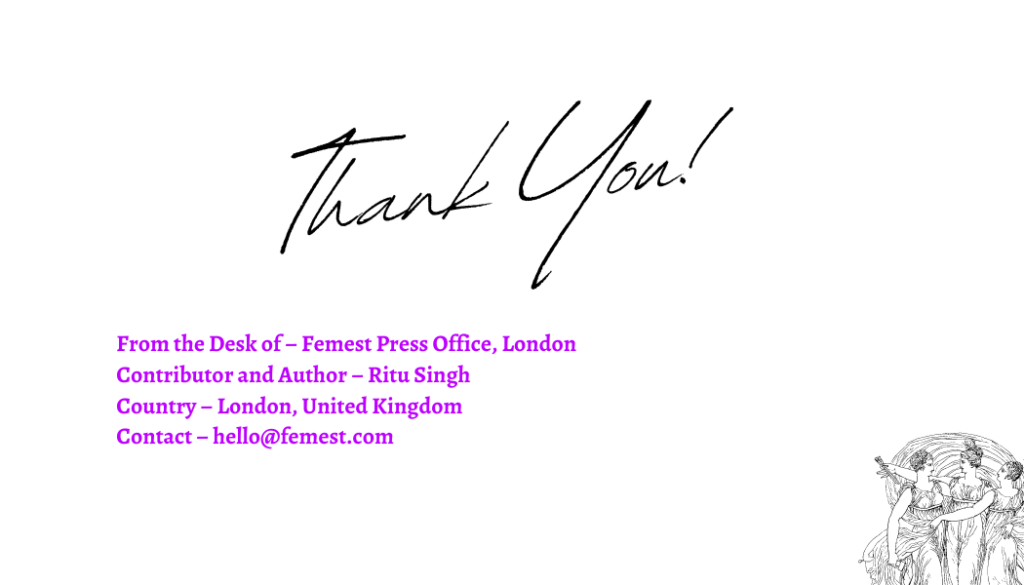In a world that tells women to be polished, she chooses to be honest. Through haunting, skin-like art, Michelle Alexander lays bare what it truly means to live in your own body and on your own terms.
What does it truly mean to feel at home in your own skin, especially in a world that constantly tells you how that skin should look, move, and behave?
For Michelle Alexander, a multidisciplinary artist navigating life between Chicago and Montreal, this question lies at the heart of her creative world. Her art isn’t meant to comfort; it’s meant to provoke, peel, and expose. It invites us to witness the emotional weight of beauty, the tension between identity and expectation, and the quiet discomforts many women carry without ever naming them.
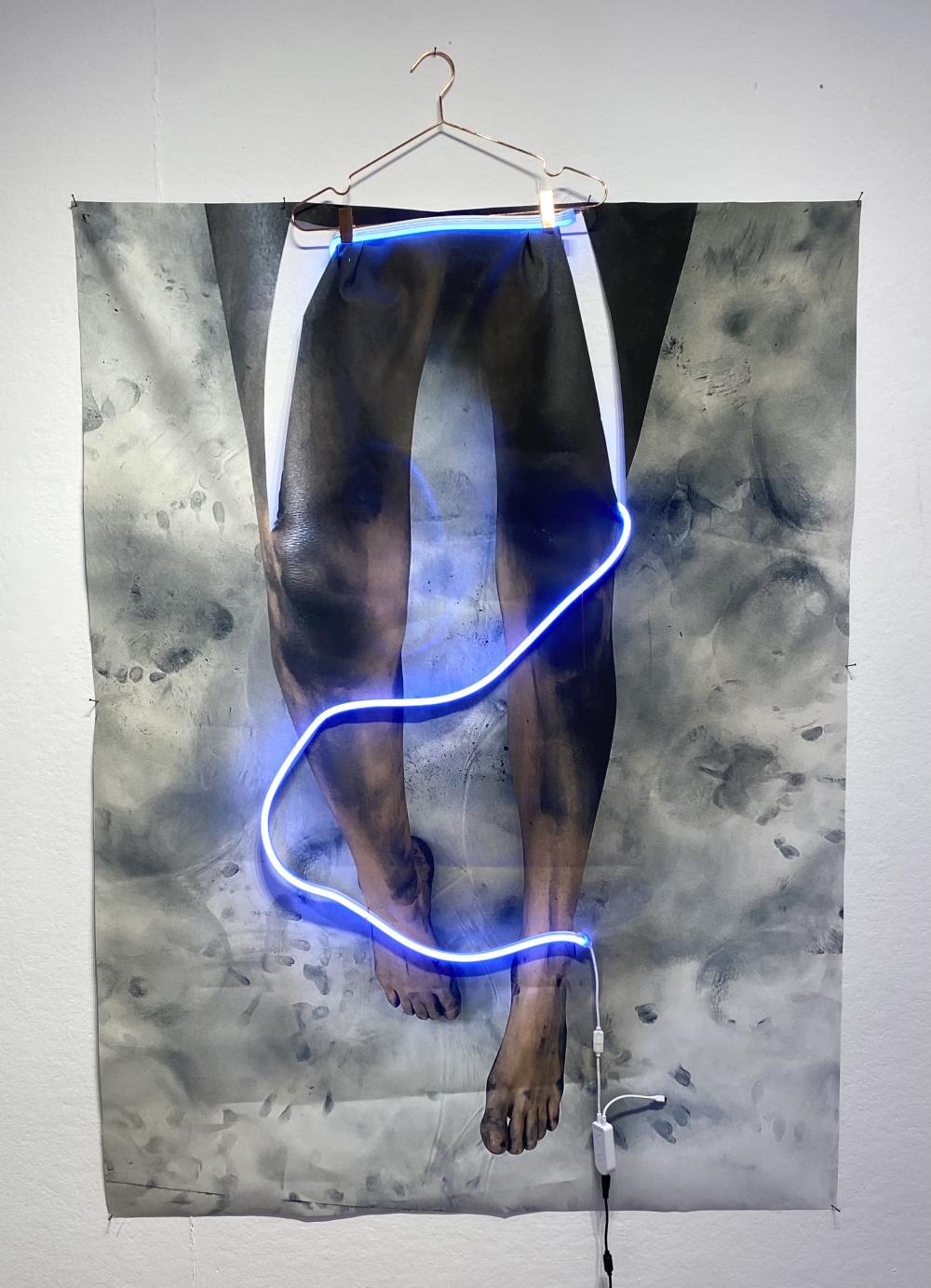
From Fashion’s Gloss to Artistic Grit
Born in 1989 in Canada, Michelle began her career in the fashion industry, an environment that while creative often felt rigid in its ideals of femininity and beauty.
“I started in fashion and at first it felt like this big creative world, but there were so many landmines to navigate beneath the surface. Women were expected to shrink, their bodies, their voices, and to reshape themselves completely to fit whatever is trending. Everything had to be polished and perfect. I didn’t want to just reinforce that. I wanted to question it, pull it apart.”
This questioning became the driving force behind her transition into contemporary conceptual art. With a background in both fashion and fine art, Michelle developed a practice that merges personal storytelling with provocative, tactile materials from human hair to gowns, footprints, and even synthetic skin.
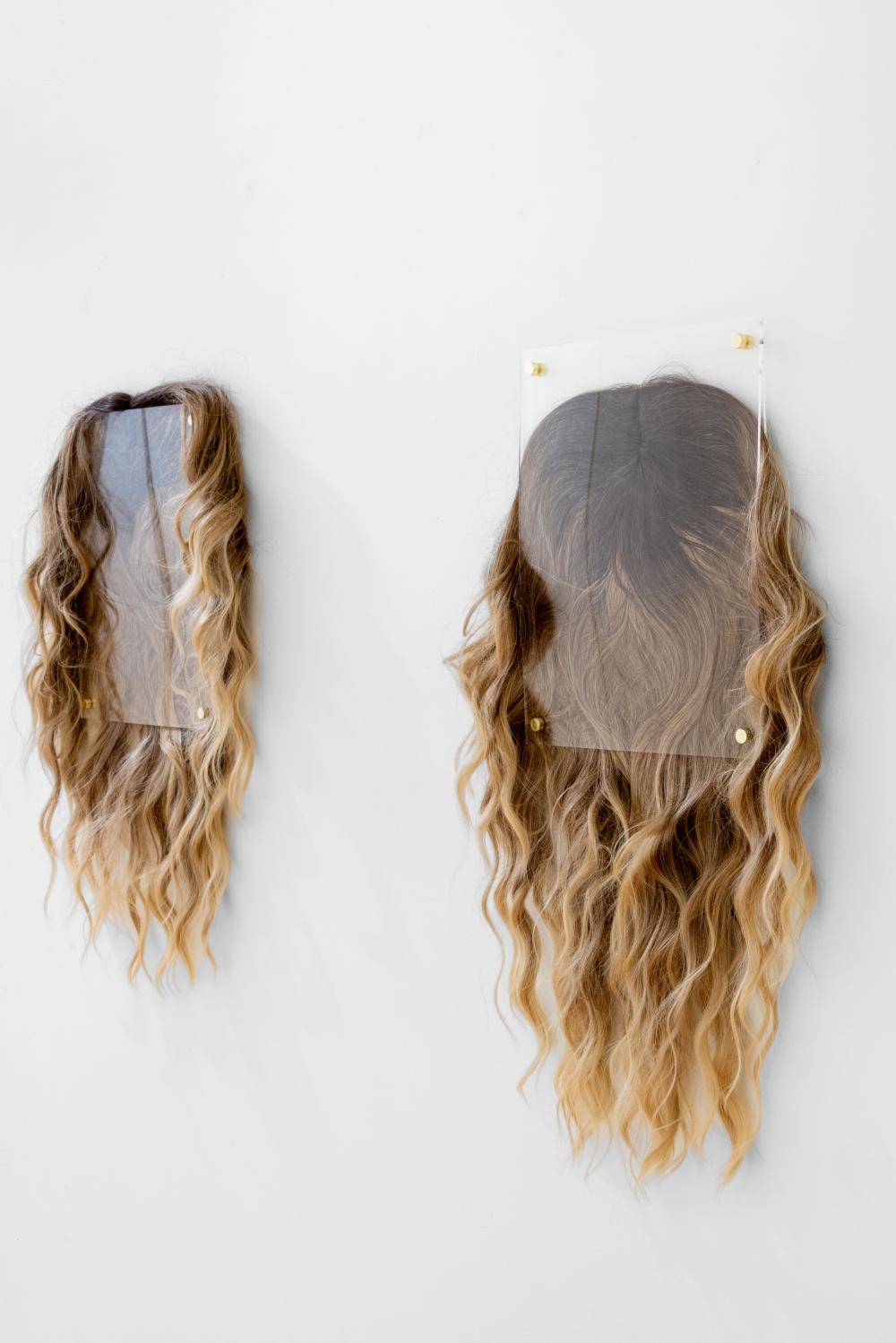
Photographer jonas mikosch müller-ahlheim
Turning Discomfort into Conceptual Form
One of Michelle’s most talked about pieces is a “treadmill covered in images of her own body,” an installation that invites the viewer to literally walk over her form. It’s unsettling, purposeful, and powerfully symbolic of how women’s bodies are often objectified and trampled over metaphorically and literally.
Her work doesn’t whisper, it confronts.
Each piece dares the viewer to pause and feel the discomfort they might otherwise avoid.
In another work, she reconstructs a bridal gown using skin-like textures, a haunting reflection on societal expectations around marriage, purity, and womanhood.
“It’s not about perfection,” she says. “It’s about the pressure to perform something that was never really mine, and what gets revealed when the surface starts to fall apart.”
Through her creations, Michelle questions: Who defines what is beautiful? And why must beauty be so often tied to pain?
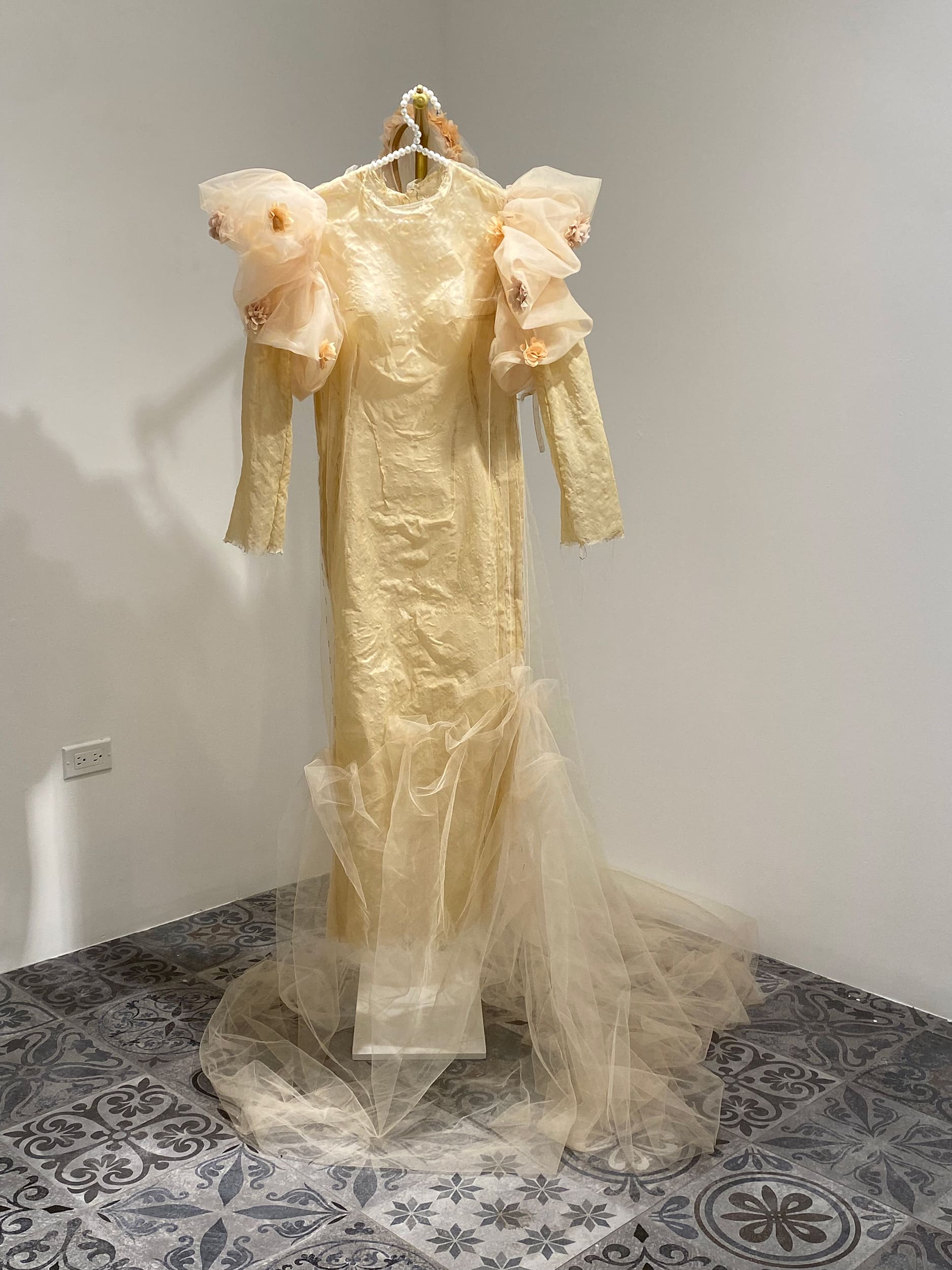
Objects with Memory, Materials with Meaning
Michelle’s installations are deeply personal. They often incorporate items loaded with memory hairpieces, worn shoes, brushes, and garments transformed into sculptures that straddle the line between intimate and unsettling. There’s a kind of sacred honesty in her approach.
“I work with materials that hold residue. Hair, clothes, stained fabric. They’ve touched the body or echo its absence. I’m drawn to what’s been handled, altered, or worn down. These objects stand in for the body. They can trigger or confront. They hold power because we give it to them. I’m not trying to make something pretty. I’m trying to make something honest.”
For Michelle, it’s not about making “pretty” art. It’s about creating space for what’s raw, real, and resistant. Her work dares to be ugly in order to be honest.

Curating Voices Beyond Her Own
Michelle isn’t only a creator, she’s a connector. In her recent curatorial work with Ivory Gate Gallery in Chicago, she presented “Connective Thread”, an exhibition that amplified diverse women artists exploring intergenerational memory, domesticity, and emotional labor.
“Curating was a way to create space for more than just my own voice. I wanted to bring together women whose work speaks to memory, the body, and the invisible labor that holds so much together. It felt like a way to build community through shared tension and tenderness. It’s still storytelling, just through a wider lens.” she explains.

What Lies Ahead
Currently, Michelle is developing new artwork and curatorial projects that continue to explore themes of visibility, trauma, healing, and autonomy. Her future installations may incorporate sound, scent, and textile movement, reflecting an ever-deepening commitment to multi-sensory experience.
“I’m interested in what lingers. What isn’t loud or obvious but still leaves a mark. I want the work to stay with you in your body, in your gut, even after you’ve stepped away from it. Something felt more than fully understood.”
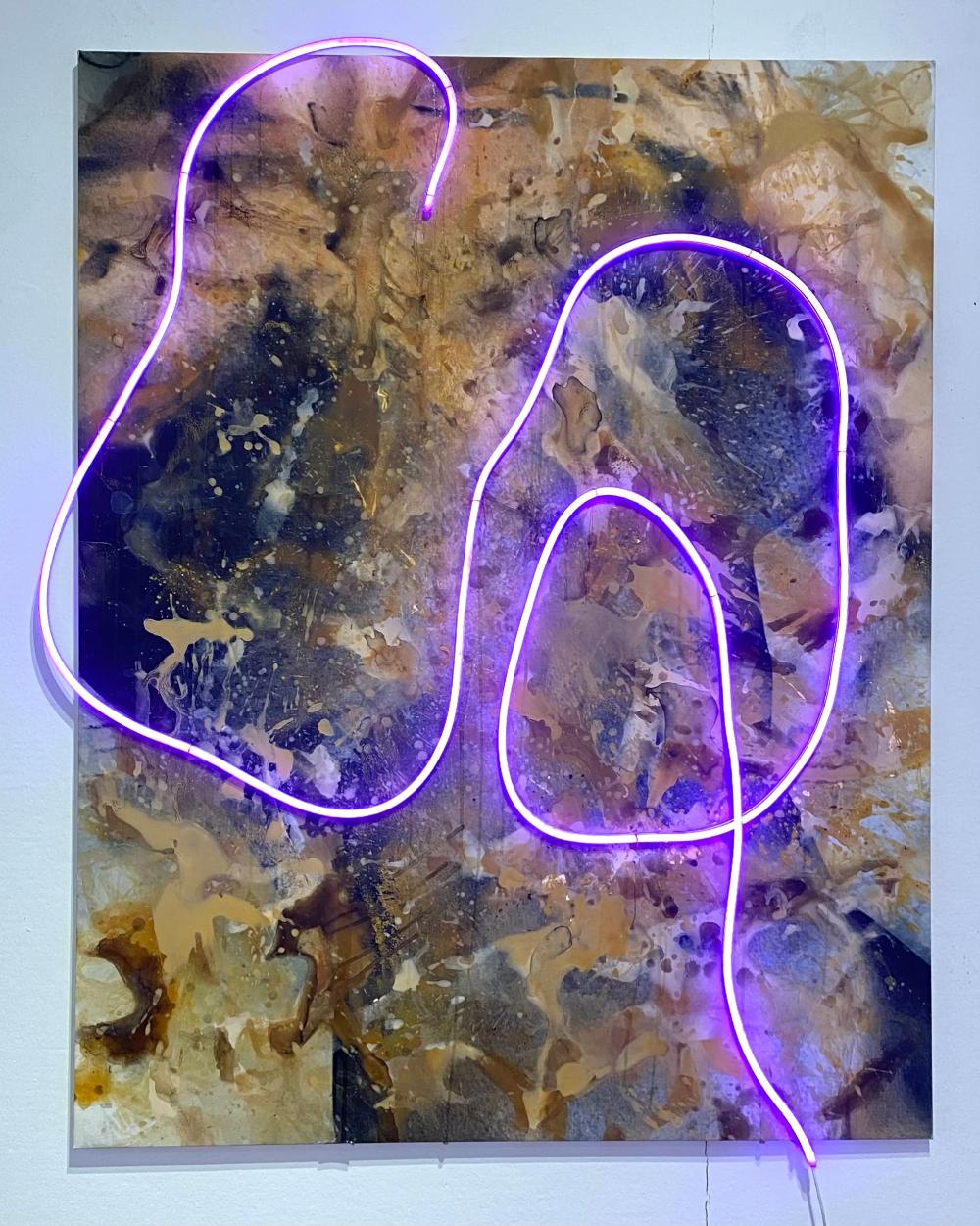
A Story of Skin, Strength, and Self-Definition
Michelle Alexander’s journey is not just one of artistic evolution, it’s one of empowerment through truth. She shows us that art doesn’t need to be perfect or pretty to be powerful. It needs to be real.
At Femest, we honour Michelle for making space where discomfort can become dialogue, where silence can become sculpture, and where the female experience unfiltered, layered, and raw can be truly seen.
Her work is a quiet rebellion, a reminder that healing starts when we stop hiding, and true power rises when we express ourselves, not just in words, but through every stitch, surface, and raw, honest detail.
